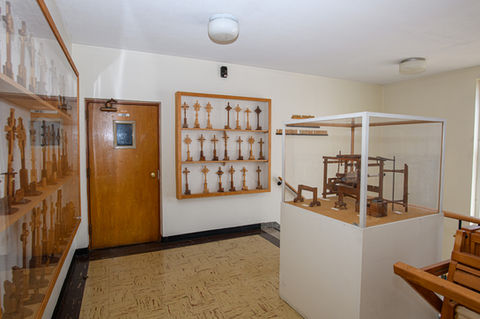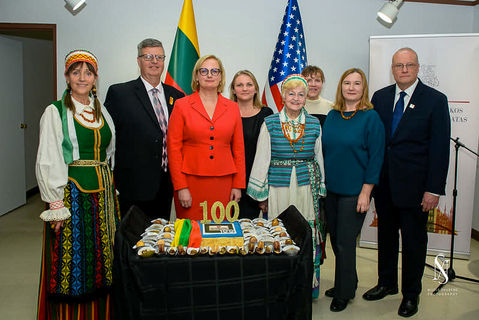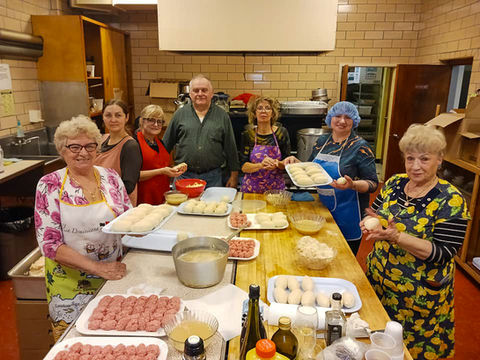Our Mission
The Chicago Lithuanian Center works in close cooperation with other Lithuanian organizations to maintain and promote the Lithuanian language, culture and heritage while providing neighborhood and other ethnic associations and communities affordable facilities for educational, cultural, religious and social activities.
.jpg)
Early Lithuanian Settlement in Chicago
The earliest recorded Lithuanian individual in Chicago dates back to 1870, though it is likely that Lithuanians were present in the city even earlier, listed under different ethnic designations. Over the next fifty years, the Lithuanian community grew significantly, becoming influential in business and politics. They played a crucial role in the city's industrial sectors, particularly in the Stockyards and factories. Alongside other ethnic groups, Lithuanians helped rebuild and revitalize Chicago after the Great Fire, contributing to the city's diverse and vibrant fabric.
The Chicago Lithuanian Center
The Chicago Lithuanian Center, constructed in 1956-1957, became the heart of the Lithuanian community in Chicago. It hosted a monastery, chapel, assembly hall, art gallery, and classrooms for Saturday schools and various activities. The Center was a bustling hub, offering classes, concerts, art exhibitions, theatrical performances, and meetings for youth organizations and community groups. Due to its success, an expansion was necessary in 1967 to accommodate more activities and people, including a popular café for social gatherings.


Join us in celebrating and preserving the rich Lithuanian heritage in Chicago.
Visit the Lithuanian Center to experience our vibrant culture, history, and community spirit. Together, we can continue building a legacy for future generations

Lithuanian Jesuits and Community Growth
Religious organizations, especially the Lithuanian Jesuits, were instrumental in the growth and development of Lithuanian communities in Chicago. They led efforts in neighborhoods like Bridgeport, Gage Park, Brighton Park, and Marquette Park, organizing people and resources. The Jesuits were key in establishing community centers, publishing books and newspapers, and building essential structures. Notably, in the 1950s, they acquired property in Gage Park to create a significant community center, spearheaded by Father Bronius Krištanavičius and Father Vaclovas Gutauskas.

Lay Administration and Continued Growth
In the 1970s, as the Lithuanian Jesuits aged, they transitioned the administration of the Center to a lay board, forming the Lithuanian Center, Inc. in 1979. This change allowed for continued growth and revitalization. The Center remained active, housing the Lithuanian Research Center, Chicago Lithuanian School, Čiurlionis Art Gallery, and later, the National Lithuanian American Hall of Fame and Lithuanian American Youth Association. The lay board ensured the Center continued to thrive, serving as a cultural and historical hub for all interested in Lithuanian heritage.
Recent Developments and Future Prospects
In May 2023, ownership of the Lithuanian Center's buildings and property was generously transferred from the Lithuanian Jesuits to the Lithuanian Center, Inc. This transition marks a new chapter, with the lay board excited about future opportunities to serve the Lithuanian community. The dedicated laypersons have successfully managed the Center for 44 years, including significant fundraising efforts for maintenance and improvements. The Board of Directors is committed to preserving and advancing the legacy established by the Lithuanian Jesuit Fathers, ensuring the Center remains a vibrant part of Chicago’s cultural landscape.

Board of Directors
.jpg)
Antanas Rašymas
President
.jpg)
Jonas Žiūraitis
Event-Bar Manager
.jpg)
Dr. Audrius Plioplys
Resident Artist
.jpg)
Vida Rupšienė
School Director
.jpg)
Inesa Makaras
Treasurer

Kristina Lapienytė
Lithuanian Research Center President

Viktorija Černičenko
Gallery Director
.jpg)
Jonas Platakis
NLAHF President

Nora Alonso
Event Manager
.jpg)
Dr. Robertas Vitas
Lithuanian Research Center Chairman
.jpg)
Rima Prišmantienė
Member

Sandra Abrutis
Member



























